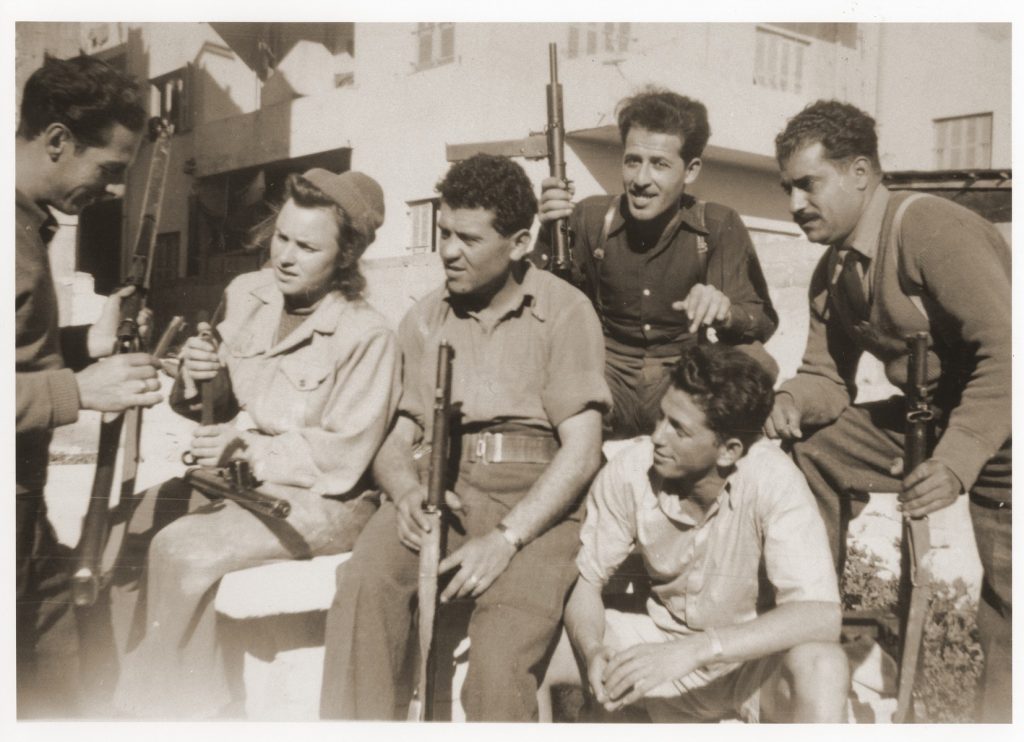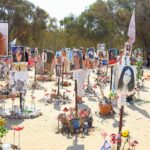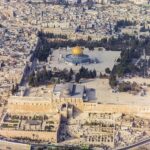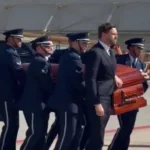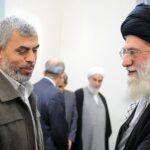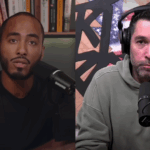Blog Post
An eyewitness to the birth of Israel and the Convoy of 35 speaks
By Jonathon Van Maren
My introduction to this series on the 20th century, “The Century that Changed Everything,” can be found here. Part I is “The World Before the War”. Part II, “How the Great War transformed Western civilization–and is still with us today,” can be found here. Part III, “The Second World War: Saving Christian civilization from Hitler’s Reich,” can be found here. Part V, “The Shoah: The murdered multitudes and the righteous few,” can be found here. This is the sixth installment in the series.
I reached Dr. Sol Bloom by phone at his home in Omaha, Nebraska, late last fall. I was working on an oral history project, recording the experiences of men and women who witnessed the cataclysmic events of the 20th century, and Bloom’s story is an incredible one: He was a member of the Haganah in the leadup to Israel’s 1948 War of Independence, smuggled weapons in Jerusalem, and witnessed the fateful departure of the Convoy of 35. “How many people are left now who would be able to talk about the Haganah at that time?” he asked me with a touch of incredulity in his voice at the life that he had lived.
I heard the news several months after our interview: Sol Bloom died on March 2, 2020 at the age of 95 and was laid to rest three days later in the Omaha National Cemetery in Nebraska among the veterans who had gone on before him. His obituary in the Omaha World-Herald mentioned nothing of his extraordinary life, listing only a handful of family members. It struck me that this is true of so many of the obituaries that take up tiny squares in newspapers packed with current events. Eyewitnesses to the last century are leaving us one by one—and often, we do not even notice their departures.
Sol Bloom was a veteran of the Second World War but didn’t see much of the action. His draft number came up in 1943 while he was studying at Franklin and Marshall College in Lancaster, Pennsylvania, and he was assigned to the 99th Infantry Division. Soon, however, it was discovered that Bloom had poor eyesight and flat feet to boot, so he was reassigned to guard duty at a stateside disciplinary barracks. “That division—I was in Company C—followed the divisions that had driven the Germans back from the beaches of Omaha to the border of Belgium, and suffered a lot of casualties,” he told me. “The 99th went in without any combat experience and [faced] the last offensive of the Wehrmacht. In one night, the division of 18,000 had 6,000 casualties. Who knows if I would have made it?”
When the war ended, Bloom discovered that the GI Bill of Rights provided him the opportunity to study agriculture at the Hebrew University in Jerusalem. His father’s cousin Ephraim Katz, who had left Romania to farm in Palestine in 1925, had also captured his imagination as a Zionist working to build a new nation by growing oranges, apples, pears, and wheat, and Bloom decided to head to Israel. In November 1946, Bloom sailed from New York to Haifa. “When I got to Haifa and went down the gangplank, this man with pepper-colored hair strolled over to me and threw his arms around me. I said: ‘Cousin Ephraim Katz?’ He knew who I was because I looked like family. He took me to his place, and he wanted to know everything about his relatives in America. I [was] looking at the Arabs smoking hookah and wearing keffiyahs, beautiful things that I’d never seen before.”
Ephraim Katz was farming near the port of Haifa, and his experience had not always been easy. In the 1929 riots, Arabs had burned his wheat and destroyed his oranges. His first wife, Sabena, had died of typhus. Katz remarried, raised a family, and continued with the dogged determination that was a characteristic of the pioneer Zionists. To Bloom’s mind, Katz’s work was foundational: He brought in new livestock breeds, farming techniques, and agricultural machinery from America, and had built a rough, utilitarian compound to live in. Bloom was assigned to the Gvat kibbutz, and Helen, a Jewish girl from the Bronx that he’d met working as a counselor, followed him there six months later.
At the kibbutz, Bloom worked in the fields and gardens and mucked out the cattle pens and chicken coops. The farm had gone from a swamp to an agricultural paradise in only twenty years. “I stayed for almost eight months,” he told me. “It had about 400 members and about 200 Holocaust survivors who had come through the British blockade. That year, staying with those people who had established this in 1925, was impressive. The soil was good soil, the kind you have in Iowa. They knew why they were there, who they were, and where they were going. It was beautiful. When I was there, they graduated their first high school class. They paired off, got married. First Jews there in centuries.”
As Sol Bloom told Leo Adam Biga of the Jewish Press almost a decade ago: “There was something completely mystical about it. The land I was working on, the plums I was harvesting, they were planted by Jews, tended by Jews, plucked by Jews. The Jews had been persecuted, separated, driven from place to place for 1,900 years and here they’d gone back to the same place from which they were driven. Here they were graduating their first set of kids back on the lands where ancient Israelis had plowed and enjoyed the fruits of that land. Back in the land of Joshua and the prophets and all the greats of Israel.”
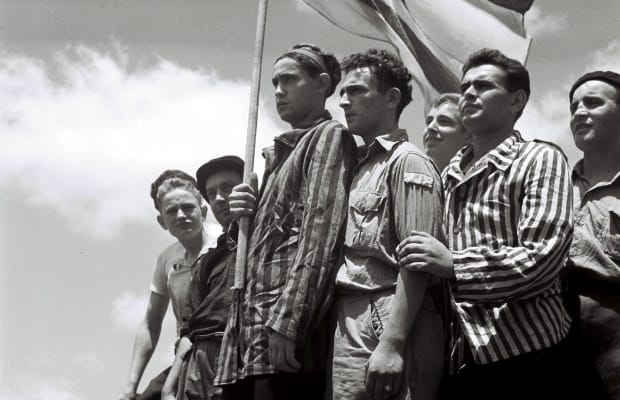
It was on Cousin Katz’s farm that Bloom married his first wife, Helen, in 1947. Soon thereafter, he and his new bride were witness to an incredible moment. “On November 29, 1947, the United Nations decided that they would split Palestine into a Jewish and an Arab state. I was living in a small suburb of Jerusalem at that time, and the information came to us around two in the morning of November 29. We got up and went out into the streets, because here was a decision that was very tumultuous. And there, on the road, coming down, was an armoured British car. And the guy driving that car was happy because maybe he could get out of Palestine, where the Jews and the Arabs were killing each other. What did we do? We went down to the capital of the Jews in Palestine at that time, and we danced and we sang and what have you.”
It was a night they would remember for the rest of their lives. “In A.D. 70, the Romans destroyed the Second Temple,” he marveled. “It was that night, with me and my wife, that had the first symbol of the recreation of Israel. One picture I have [of] it [is] from my wife, the morning after that.”
But the United Nations Partition Plan was merely the beginning of the struggle: The Jews were going to have to fight for their homeland. Like many other young Americans, Bloom signed up for the Haganah, the Zionist paramilitary force created in 1920 for the defence of Jewish communities, particularly from hostile Arabs. Bloom hadn’t seen combat, but he did have military training, which made him an immediate asset. “The Haganah got us all together at Hebrew University and said, you fellows that have been in the army, we don’t know what’s going to be going on,” Bloom told me. “We want you to be in the Haganah with us. They said [that] if anyone doesn’t want to participate in this, they could leave.”
The Haganah forces went on night patrols, and Bloom went on reconnaissance missions to assess the strength of Arab militias. Quartering in private homes to remain unseen by British troops and Arab hostiles during the day, they moved by rooftop at night. “One of the things I did was smuggle weapons,” Bloom recalled. “We had destroyed a hotel in the Arab part of Jerusalem. We had to move weapons to a hotel that was next to the British buildings. How were we going to do it? We put them, the Sten guns and everything, into the back of a laundry truck, and used that to get to the hotel. A German woman ran the hotel. We’d take the Sten guns apart. If you needed to move Sten guns, you’d break them down into pieces, give them to the more buxom ladies, and they’d put them under their brassieres.”
In January of 1948, the Haganah was strategizing on how to relieve the besieged settlement of Gush Etzion, as the settlers there had been attacked twice within a single week and a convoy the previous month had also come under fire. Initially, Sol Bloom was one of those selected by the Haganah officers to break the siege of the Arab Legion. “As I was sitting there, the officers were playing chess and they were thinking—who’s going to be in this group to fight the Arabs?” he told me. “I heard them talking and they said: We can’t send Bloom. And I said: Why? Why? They said: Listen, he’s an American. We’re not a nation or anything, and we have enough problems. And I was there when the best of our soldiers, who became known as the Lamed He, went out. The next morning, the British at the station said that they had been all slaughtered, destroyed. I’m only able to talk to you…” And Bloom’s voice trailed off.
Bloom later recorded the events in a letter to his daughter urging her to visit the Forest of the Thirty-Five memorial in Israel:
The Haganah decided to send a small force of thirty-five soldiers, most from the Pal Mach’s best veterans, plus a few from our group of American recruits, to try and lift the terrible threat at Ramat Rachel. I was one of the Americans selected to join the thirty-five. During the final determination of who was to go, I was on my bunk listening to the officers of our battalion discussing those to be sent. One said: “Well we can’t send Shlomo Bloom, he’s married.” The other officer asked: “Why not?” The reply came back; “Well suppose Shlomo becomes a casualty and doesn’t get back here after this action. Then we have his American wife sitting, grieving alone here in Jerusalem. We can’t handle all the problems that would come up. There will be too many diplomatic and political problems if that happens; we just can’t be concerned with such a problem.” So I was struck from the list and Moshe Perlstein, whom I had trained with but had no previous U.S. army experience, was selected in my place to join the thirty-five.
I will always remember how formidable—yes, how heroic—the “35” appeared in all their battle gear, as they assembled on the edge of Beit Hakarem. They were the Yishuv’s best and seemed invincible in my eyes. The group went out to reach Ramat Rachel, but never made it through the Judean hills. Twenty-four hours went by and no word from the “35.” Then our officers assembled a further group, I among them, to seek them out. Just before we started, the officers were listening to the news and there was this British bulletin stating that the “35” had been caught in an Arab ambush and there were no survivors. This tragedy was a terrible blow to the Haganah, the kibbutz fell to the Arab Legion a few days later and its surviving members were taken prisoner…Being married to my first wife Helen…was my salvation. And what eternal gratitude I have for that Haganah officer who decided not to send me because of my marriage. That sweet soul Moshe, my good friend from training days and life together in the Haganah, became, as far as I know, one of the first Americans to fall in the war of independence for Israel.
As the violence escalated, Bloom’s parents began to push for them to return to the United States. “My family decided to pull me out of the Siege of Jerusalem in February,” Bloom told me.
Even as he and his wife left Jerusalem for Haifa to stay with Ephraim Katz before their return to America, Bloom narrowly escaped death. “It’s a misty day, without very good vision,” Bloom recalled, his voice sounding as if he was there again. “We go from the Jewish sector of Haifa to the Arab section, where we had a wadi, and we knew that over the wadi and hill that we had Arab emplacements. It was foggy. We hid in an abutment. The glass broke in the front, and the driver moved on and as we went across the wadi, they opened up on us. Thank God we made it. We were blessing all of the people in the bus, back and forth. Along the side of the bus was steel plates—it was armoured. There were three bullets in the plates, and where they were meant that if the plate hadn’t been there, they would have ended up in my kidneys.”
Back in America, Bloom returned to university, choosing a profession that he could use back in Israel. He earned master’s degree from Penn State and his PhD from Iowa State University, becoming an expert dairy nutritionist. In 1957, with the Suez Canal crisis transforming the Middle East once again into a powder keg, Bloom ignored the orders of the American government and took the opportunity to head back to Israel, where he worked for six years. His voice still filled with excitement decades later, he told me of meeting with the famous one-eyed general and then-Minister of Agriculture Moshe Dayan, and even a story of David Ben-Gurion’s infamous stubbornness: “His daughter was in our class. I went to the kibbutz where Ben-Gurion retired. It was January or February, when it was the rain season. The wadis were filled with water, but he got the vehicle across anyway. When there’s five or six months of dry weather in the Negev, the feeling in the air, the freshness after the rains, are almost intoxicating.”
As I said goodbye to Bloom, he suddenly stopped me. There was one more memory he wanted to share, he said, about a transcendent morning on the kibbutz back in Israel. “It was the most beautiful thing I’ve seen in agriculture in my life. When you’re on the kibbutz and you get up in the morning at 5:30 or 6, you get your coffee and go out to work and then come back for your breakfast. One vegetable garden was across the road, which was the road to Nazareth. We were pulling carrots. We have a prayer for the dew. Carrots have foliage above that is very delicate. Just as the sun was coming up, and just as we were walking across, the sun had come up and turned the entire field into a field of shimmering diamonds, shining through the dew.”
I’m not sure why that memory, of all the strange and incredible things that Sol Bloom had seen throughout his storied life, had leapt to his mind. Perhaps it was the fragility of the plants the farmers were tending to, or the newness of the morning dew, or the shining reality of the sun rising on a new world in the morning. Perhaps it was all of that. What I do know is that when Sol Bloom closed his eyes for the last time a few months ago, one of the final eyewitnesses of the birth of a new nation left us, leaving us to argue about the past without him—and to the business of the future.


